1.3.3E: Tasas de Cambio y Comportamiento de las Gráficas
- Page ID
- 116503
Sección 1.3 EJERCICIO
- La siguiente tabla da las ventas anuales (en millones de dólares) de un producto. ¿Cuál fue la tasa promedio de cambio de las ventas anuales...
a) Entre 2001 y 2002?
b) ¿Entre 2001 y 2004?año 1998 1999 2000 2001 2002 2003 2004 2005 2006 ventas 201 219 233 243 249 251 249 243 233 - El siguiente cuadro da la población de un pueblo, en miles. ¿Cuál fue la tasa promedio de cambio de la población...
a) Entre 2002 y 2004?
b) ¿Entre 2002 y 2006?año 2000 2001 2002 2003 2004 2005 2006 2007 2008 población 87 84 83 80 77 76 75 78 81 - Con base en la gráfica mostrada, estimar la tasa promedio de cambio de\(x = 1\) a\(x = 4\).
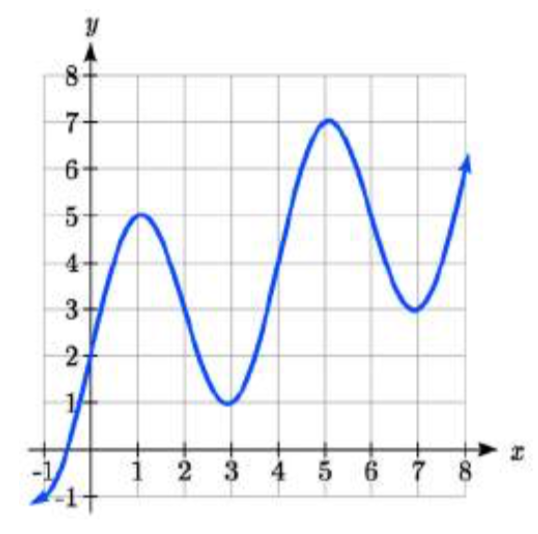
- Con base en la gráfica mostrada, estimar la tasa promedio de cambio de\(x = 2\) a\(x = 5\).
Encuentra la tasa promedio de cambio de cada función en el intervalo especificado. - \(f(x)=x^{2}\)en [1, 5]
- \(q(x)=x^{3}\)el [-4, 2]
- \(g(x)=3x^{3} -1\)el [-3, 3]
- \(h(x)=5 - 2x^{2}\)el [-2, 4]
- \(k(t)=6t^{2} +\dfrac{4}{t^{3} }\)en [-1, 3]
- \(p(t)=\dfrac{t^{2} - 4t + 1}{t^{2} + 3}\)on [-3, 1]
Encuentra la tasa promedio de cambio de cada función en el intervalo especificado. Tus respuestas serán expresiones que involucren un parámetro (\(b\)o\(h\)). - \(f(x)= 4x^{2} -7\)en [1,\(b\)]
- \(g(x)= 2x^{2} -9\)en [4,\(b\)]
- \(h(x)= 3x + 4\)en [2, 2 +\(h\)]
- \(k(x)= 4x - 2\)en [3, 3 +\(h\)]
- \(a(t)=\dfrac{1}{t + 4}\)el [9, 9 +\(h\)]
- \(b(x)=\dfrac{1}{x + 3}\)en [1, 1 +\(h\)]
- \(j(x)=3x^{3}\)en [1, 1 +\(h\)]
- \(r(t)=4t^{3}\)en [2, 2 +\(h\)]
- \(f(x)=2x^{2} + 1\)en [\(x\),\(x + h\)]
- \(g(x)=3x^{2} - 2\)on [\(x\),\(x + h\)]
Para cada función graficada, estime los intervalos en los que la función está aumentando y disminuyendo. 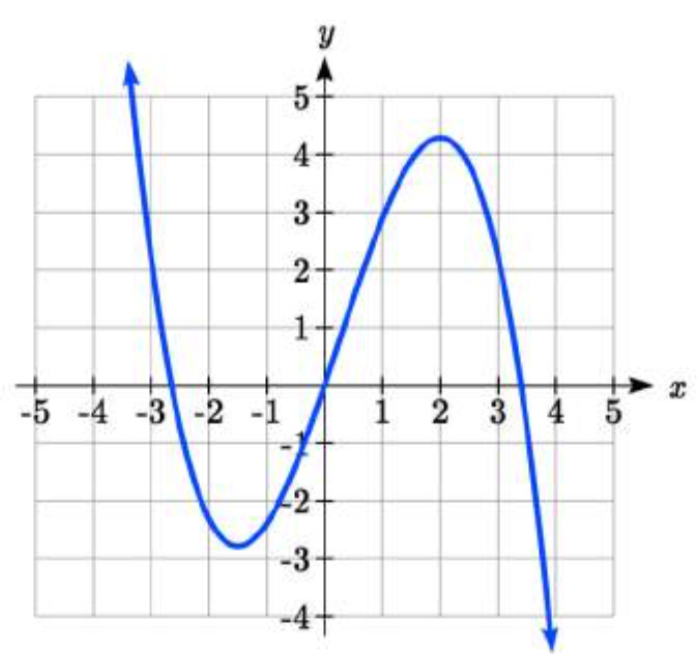
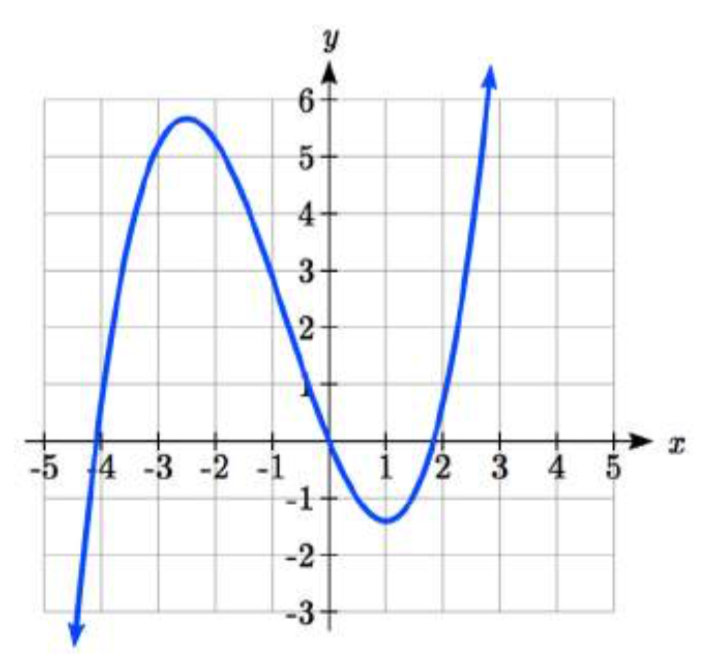
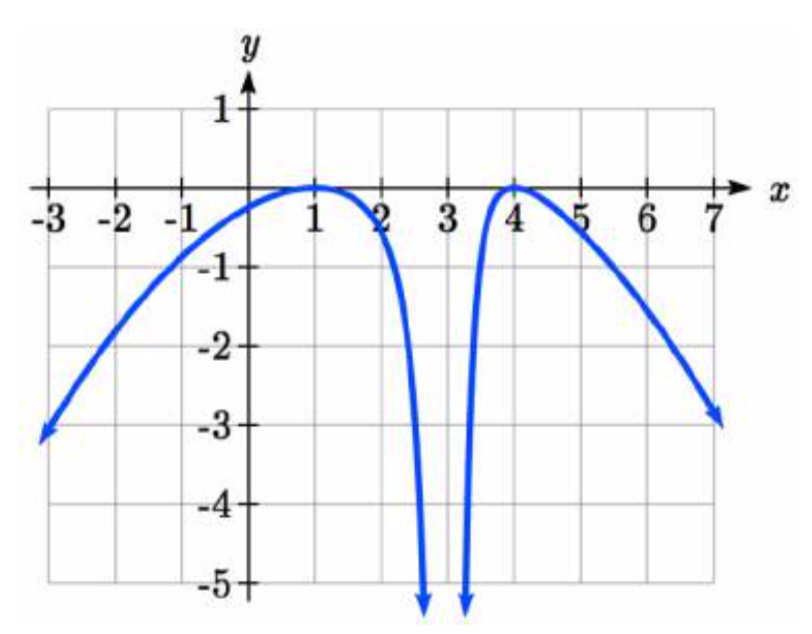
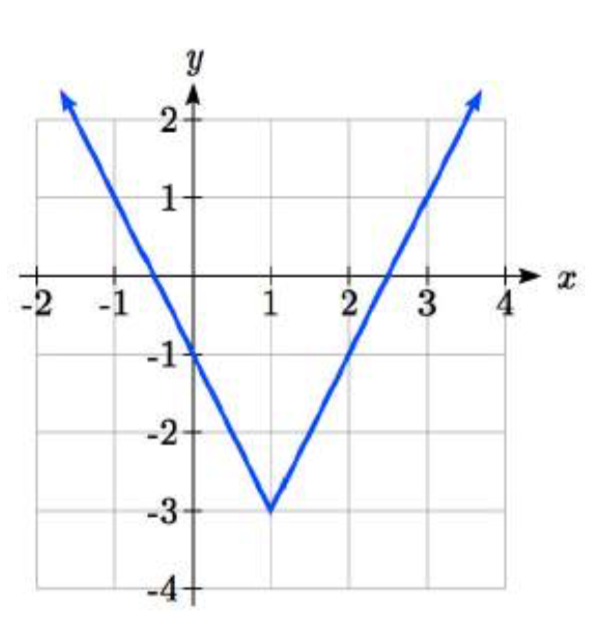
Para cada tabla a continuación, seleccione si la tabla representa una función que está aumentando o disminuyendo, y si la función es cóncava hacia arriba o cóncava hacia abajo.
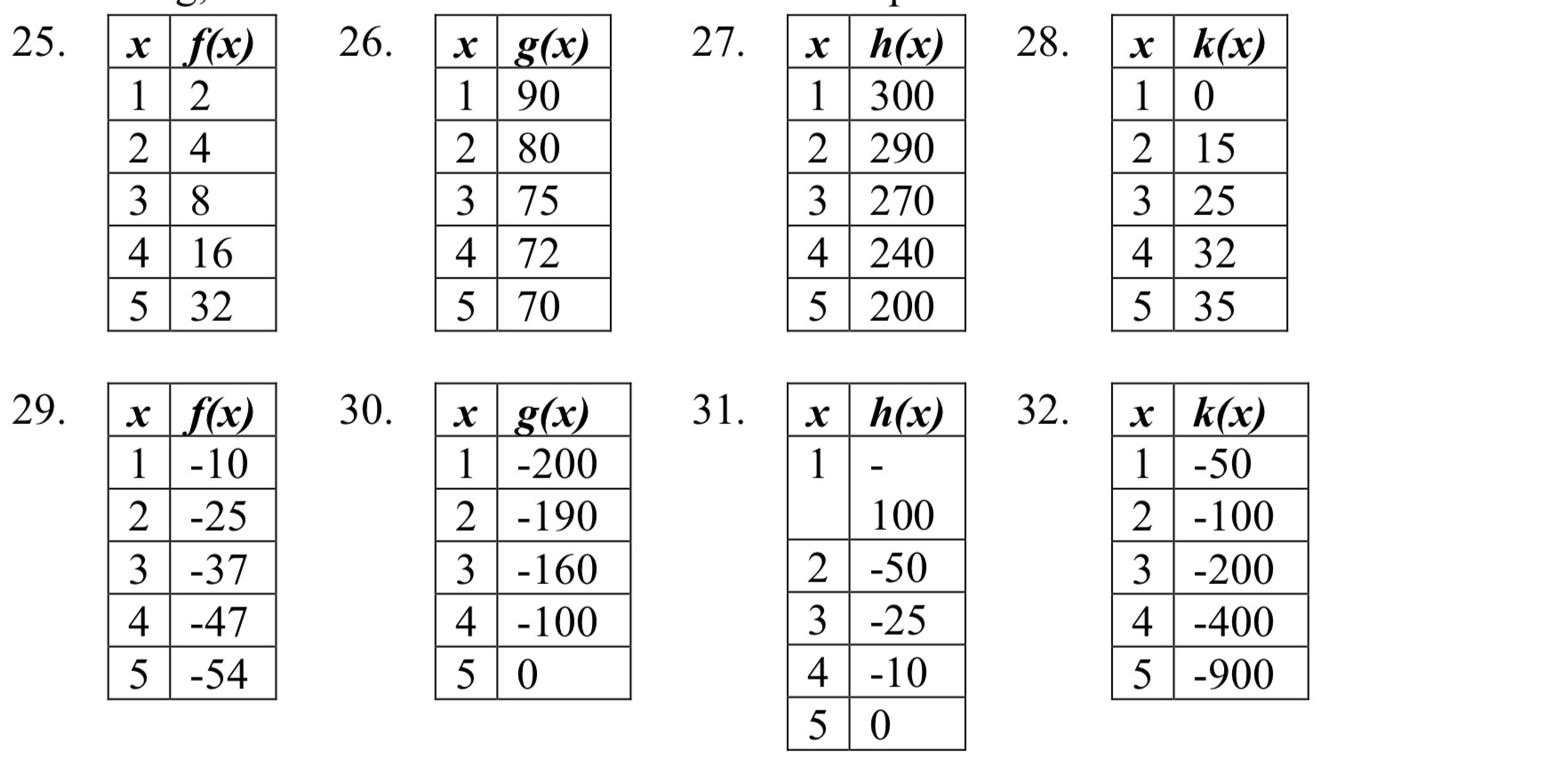
Para cada función graficada, estime los intervalos en los que la función es cóncava hacia arriba y hacia abajo, y la ubicación de cualquier punto de inflexión.
33. 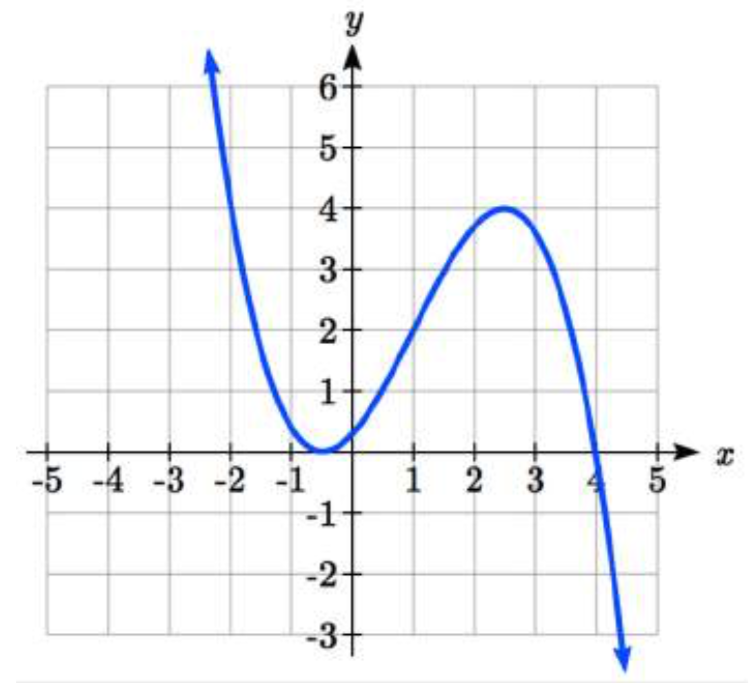
34. 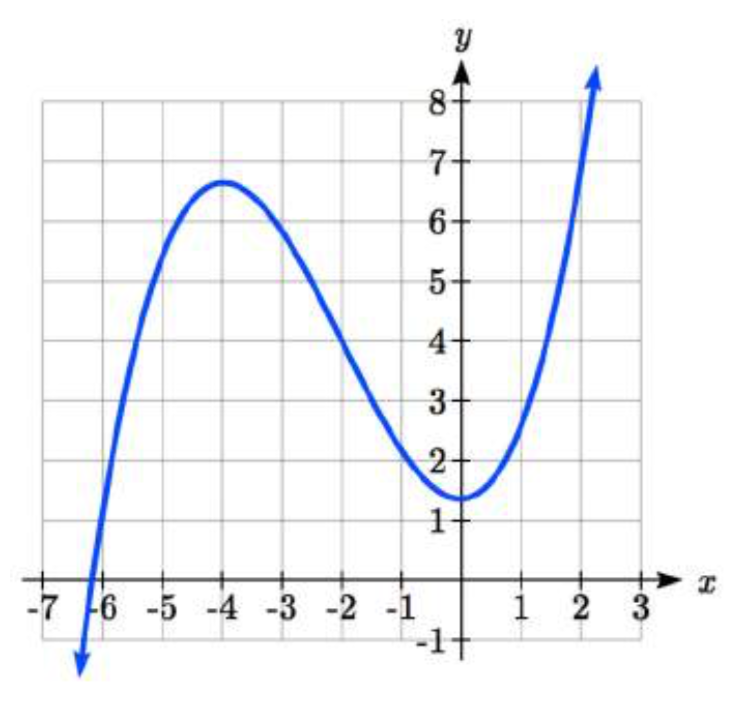
35. 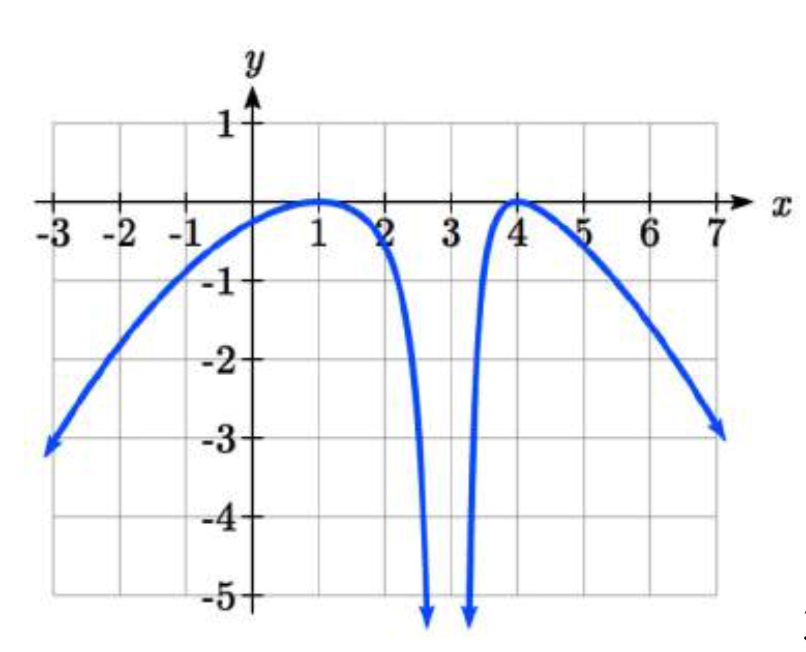
36. 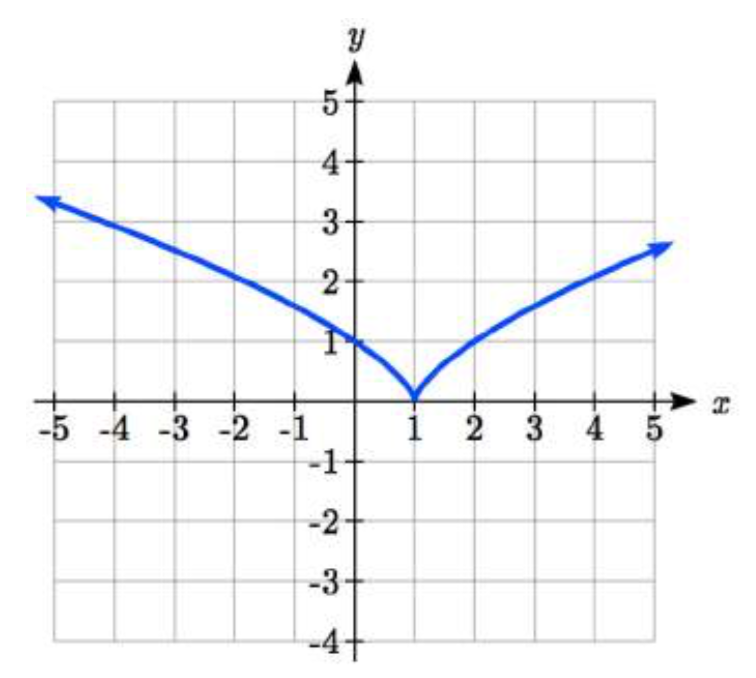
Utilice una gráfica para estimar los extremos locales y los puntos de inflexión de cada función, y para estimar los intervalos en los que la función está aumentando, disminuyendo, cóncava hacia arriba y cóncava hacia abajo.
37. \(f(x) = x^4 - 4x^3 + 5\)
38. \(h(x) = x^5 + 5x^4 + 10x^3 + 10x^2 - 1\)
39. \(g(t) = t \sqrt{t + 3}\)
40. \(k(t) = 3t^{\dfrac{2}{3}} - t\)
41. \(m(x) = x^4 + 2x^3 - 12x^2 - 10x + 4\)
42. \(n(x) = x^4 - 8x^3 + 18x^2 - 6x + 2\)
- Contestar
-
1. a) 6 millones de dólares anuales
b) 2 millones de dólares anuales3. \(\dfrac{4 - 5}{4 - 1} = -\dfrac{1}{3}\)
5. 6
7. 27
9. \(\dfrac{352}{27}\)
11. \(4b + 4\)
13. 3
15. \(-\dfrac{1}{13h + 169}\)
17. \(9 + 9h + 3h^2\)
19. \(4x + 2h\)
21. Incrementando: (-1.5, 2). Disminución:\((-\infty, -1.4) \cup (2, \infty)\)
23. Incrementando:\((-\infty, 1) \cup (3,4)\). Disminución:\((1, 3) \cup (4, \infty)\)
25. Aumento, cóncavo hacia arriba
27. Disminución, cóncava abajo
29. Disminución, cóncava arriba
31. Creciente, cóncava hacia abajo
33. Cóncava hacia arriba\((-\infty, 1)\). Abajo cóncavo\((1, \infty)\). Punto de inflexión en (1, 2)
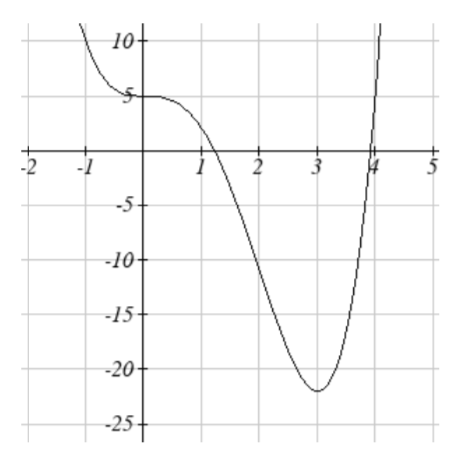 35. Cóncavo\(-\infty, 3) \cup (3, \infty)\)
35. Cóncavo\(-\infty, 3) \cup (3, \infty)\)37. Mínimo local en (3, -22).
Puntos de inflexión en (0, 5) y (2, -11).
Aumentando en\(3, \infty)\). \((-\infty, 3)\)
Concava decreciente hacia\((-\infty, 0) \cup (2, \infty)\) arriba Cóncavo hacia abajo (0, 2)39. Mínimo local al\((-2, -2)\)
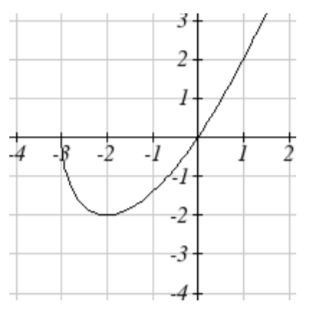
disminuir (-3, -2)
Aumentando\((-2, \infty)\)
cóncavo hacia arriba\((-3, \infty)\)41. Mínimos locales en (-3.152, -47.626) y (2.041, -32.041) Máximo
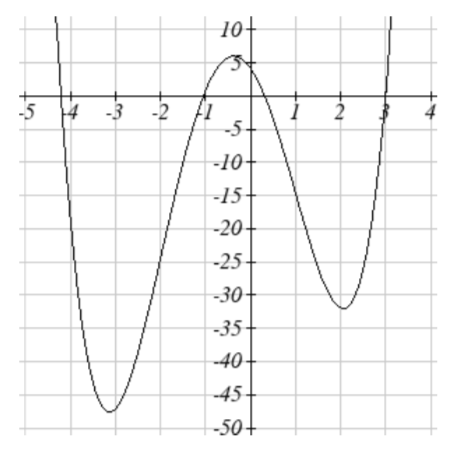
local en (-0.389, 5.979) Puntos de
inflexión en (-2, -24) y (1, -15)
Aumento\((-3.152, -0.389) \cup (2.041, \infty)\)
decreciente\((-\infty, -3.152) \cup (-0.389, 2.041)\)
Cóncavo hacia arriba\((-\infty, -2) \cup (1, \infty)\)
Cóncavo hacia abajo (-2, 1

